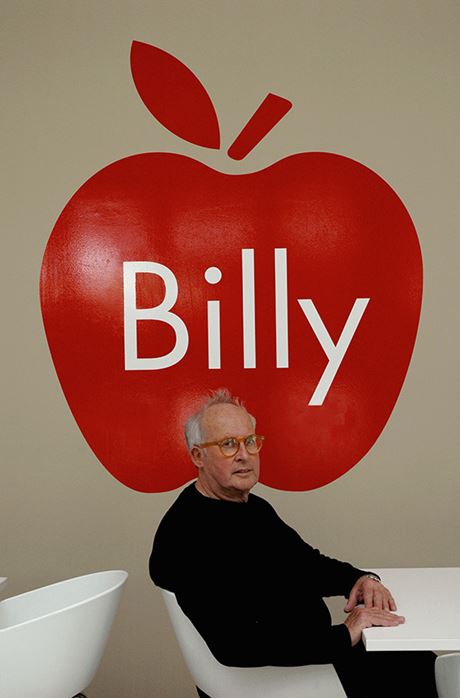Thursday 18 December 2014
High-performance racing cars, human cells and branded products mix with paintings, sculptures, drawings, photographs, videos, and neon light works in Billy Apple®: The Artist Has to Live Like Everybody Else, the retrospective exhibition coming up at Auckland Art Gallery Toi o Tāmaki.
To coincide with the Auckland Arts Festival, Billy Apple®: The Artist Has to Live Like Everybody Else opens at Auckland Art Gallery on Saturday 14 March 2015. The most substantial survey of Billy Apple's work to be seen in New Zealand, it runs until 21 June 2015.
New Zealander Billy Apple was 'born' in London in 1962, the same year he graduated from the Royal College of Art (RCA), when the 26-year-old artist changed his name and bleached his hair. By reinventing himself, Apple sought to establish a new relationship between the artist and everyday life by exploring how he could be redefined as a 'product' with his own distinct brand. This was his unique contribution to the emerging pop art scene in London where a new generation of artists were redirecting their attention to the burgeoning world of consumer commodities.
Apple's contemporaries include British pop artist David Hockney, friend and fellow student at the RCA, London and the late American artist Andy Warhol, with whom he exhibited in the pivotal pop art exhibition, American Supermarket, in New York, 1964. This is considered the first art installation and introduced pop art to the masses.
Apple's commitment to testing the boundary between art and life continue to this day. In 2007, Billy Apple® registered his name as a trademark. He is now involved in various projects that explore the legal concept of intellectual property by bringing his art brand into the martketplace. As he says, 'In 1964 we took the supermarket into the art gallery, now we're taking the art gallery into the supermarket.'
'Apple is an artist of and for our times,' says the exhibition's curator, Christina Barton. 'He tests how art and the artist can perform under the influence of consumer capitalism in an era of ever-advancing technologies. He has lent his brand to racing cars, food and beverages, corporate offices and billboard campaigns. His innate fascination with science and new technologies - from lasers and xerography in the 1960s to his recent Immortalisation project where he donated his cells for scientific research - continue to blur the boundaries between art, life, science and commerce.'
With more than 150 artworks, the exhibition is the largest presentation of work by the celebrated Auckland-born artist whose career spans more than 50 years across three continents. Alongside pop and neon light works from the 1960s, the retrospective will include a 15-metre high text work, high-performance racing motorcycles and cars, including a famed Lola T212, and the artist's own cells, virally transformed to live outside his body.
'Apple is widely regarded as New Zealand's most significant conceptual artist,' says Barton. 'His career here began with a series of installations he undertook in 1975. Then, he was a New York-based artist who scandalised the New Zealand public by undertaking his 'subtractions' and 'alterations' to gallery spaces throughout the country, so introducing audiences to the kind of activity-based practices that were then galvanising artists in the USA.'
Now resident in Auckland, Apple continues to produce installations and artworks that attend to the specific nature of architectural and public spaces. Documentation of these will be an important feature of the exhibition.
Apple's contributions to the history of pop and conceptual art have been recognised internationally, with a major two-part survey at Rotterdam's esteemed Witte de With Center for Contemporary Art in 2009, as well as two solo shows at The Mayor Gallery in London (2010 and 2013), and his forthcoming inclusion in the Walker Art Center's major survey of pop art opening in Minneapolis USA in April 2015. His works are to be found in major collections including Tate Britain, the Solomon R Guggenheim Museum, the National Galleries of Scotland, Auckland Art Gallery Toi o Tāmaki and Te Papa Tongarewa Museum of New Zealand.
'An active player in key art movements from the 1960s to the present, Apple has contributed significantly to the histories of pop art, light art, conceptual art, performance art, installation art and more,' says Auckland Art Gallery Director Rhana Devenport. 'Billy Apple®: The Artist Has to Live Like Everybody Else is the first exhibition to bring all the dimensions of Apple's long and diverse practice together. This is a major initiative for Auckland Art Gallery and New Zealand.'
Billy Apple®: The Artist Has to Live Like Everybody Else will run from 14 March until 21 June 2015. Entry is FREE

